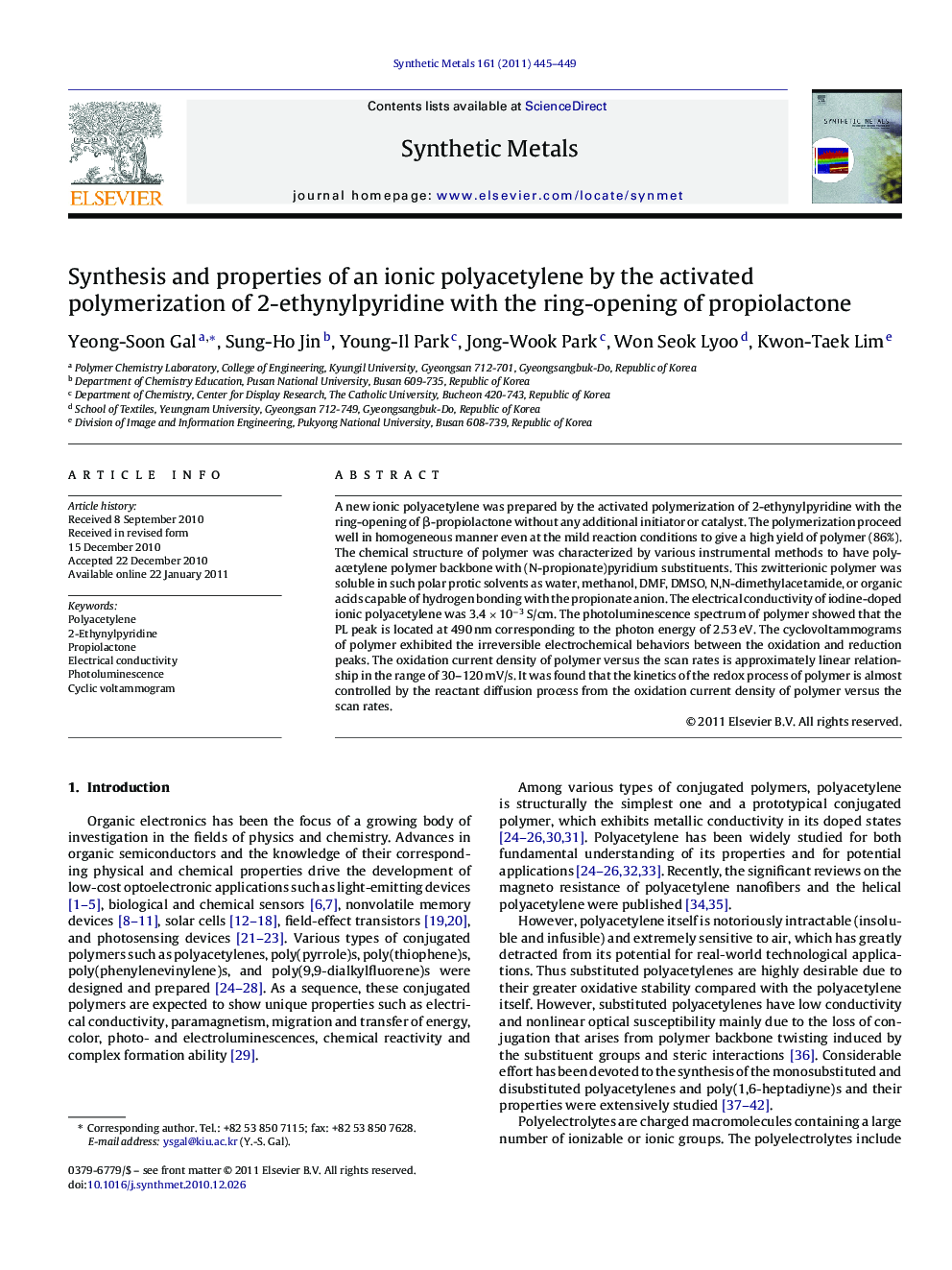| کد مقاله | کد نشریه | سال انتشار | مقاله انگلیسی | نسخه تمام متن |
|---|---|---|---|---|
| 1442258 | 1509434 | 2011 | 5 صفحه PDF | دانلود رایگان |

A new ionic polyacetylene was prepared by the activated polymerization of 2-ethynylpyridine with the ring-opening of β-propiolactone without any additional initiator or catalyst. The polymerization proceed well in homogeneous manner even at the mild reaction conditions to give a high yield of polymer (86%). The chemical structure of polymer was characterized by various instrumental methods to have polyacetylene polymer backbone with (N-propionate)pyridium substituents. This zwitterionic polymer was soluble in such polar protic solvents as water, methanol, DMF, DMSO, N,N-dimethylacetamide, or organic acids capable of hydrogen bonding with the propionate anion. The electrical conductivity of iodine-doped ionic polyacetylene was 3.4 × 10−3 S/cm. The photoluminescence spectrum of polymer showed that the PL peak is located at 490 nm corresponding to the photon energy of 2.53 eV. The cyclovoltammograms of polymer exhibited the irreversible electrochemical behaviors between the oxidation and reduction peaks. The oxidation current density of polymer versus the scan rates is approximately linear relationship in the range of 30–120 mV/s. It was found that the kinetics of the redox process of polymer is almost controlled by the reactant diffusion process from the oxidation current density of polymer versus the scan rates.
Figure optionsDownload as PowerPoint slideResearch highlights▶ A new ionic polyacetylene was synthesized by the activated polymerization of 2-ethynylpyridine with the ring-opening of β-propiolactone without any additional initiator or catalyst. This zwitterionic polymer was soluble in such polar protic solvents as water, methanol, DMF, DMSO, N,N-dimethylacetamide, or organic acids. The cyclovoltammograms of polymer exhibited the irreversible electrochemical behaviors between the oxidation and reduction peaks. The kinetics of the redox process of polymer was found to be almost controlled by the reactant diffusion process from the oxidation current density of polymer versus the scan rates.
Journal: Synthetic Metals - Volume 161, Issues 5–6, March 2011, Pages 445–449